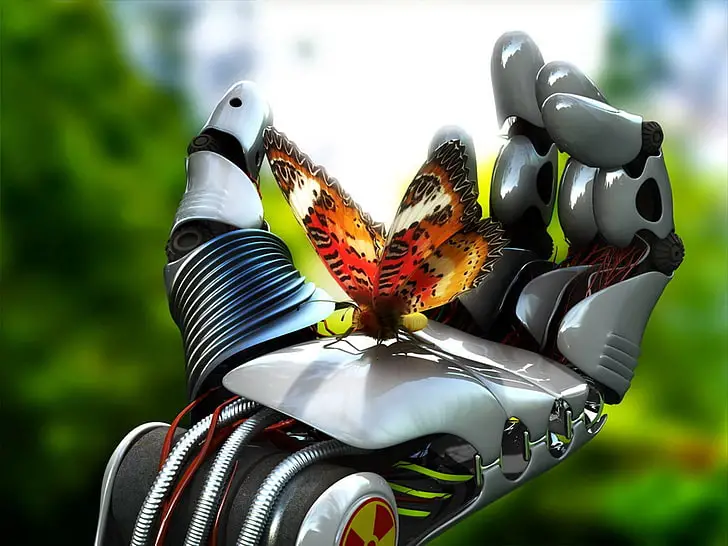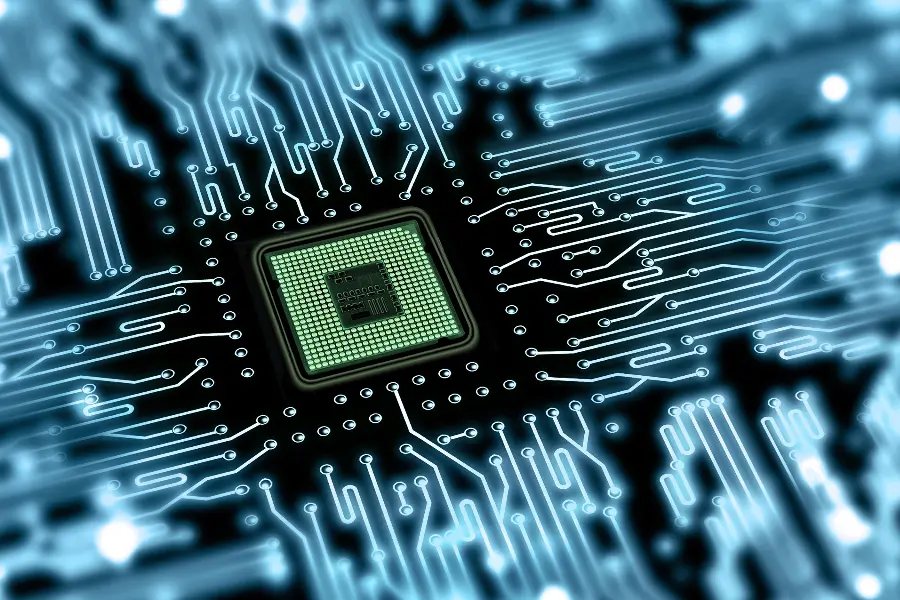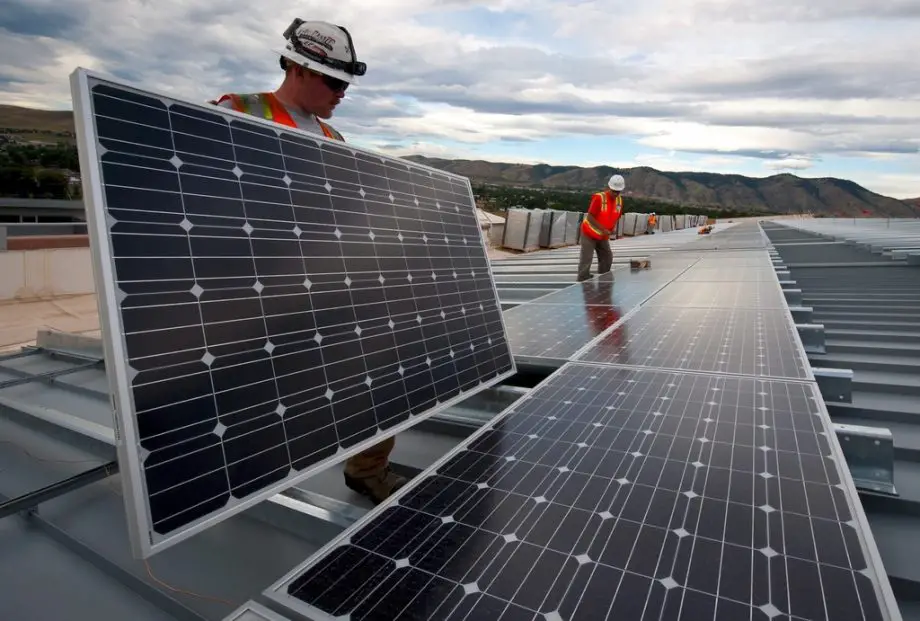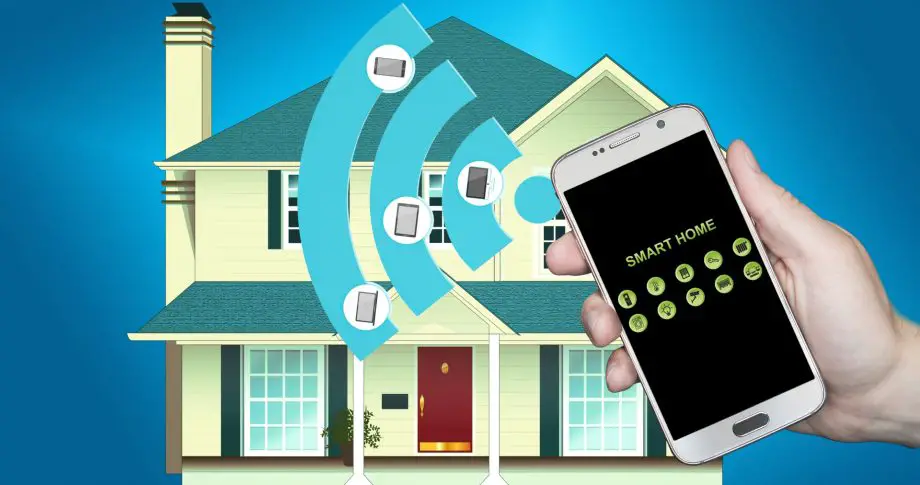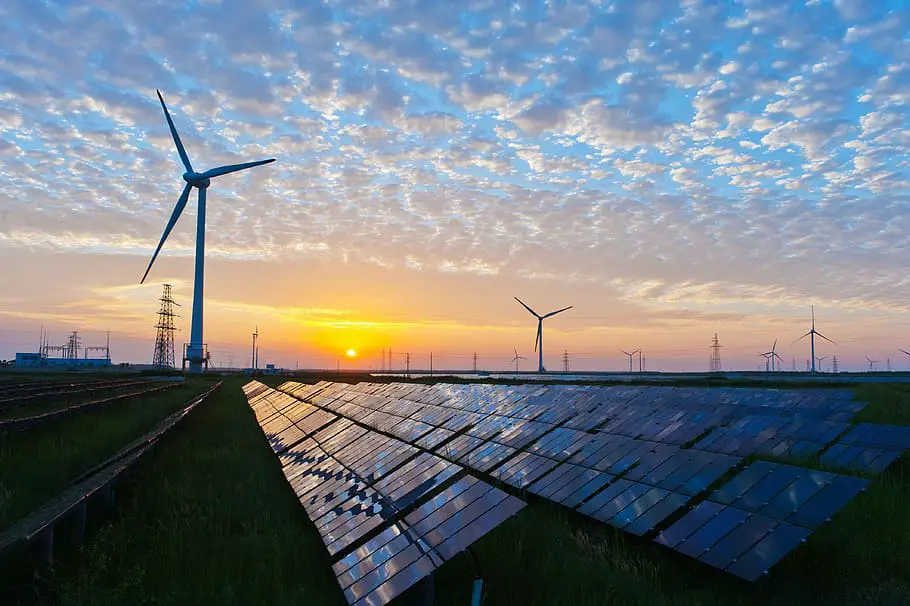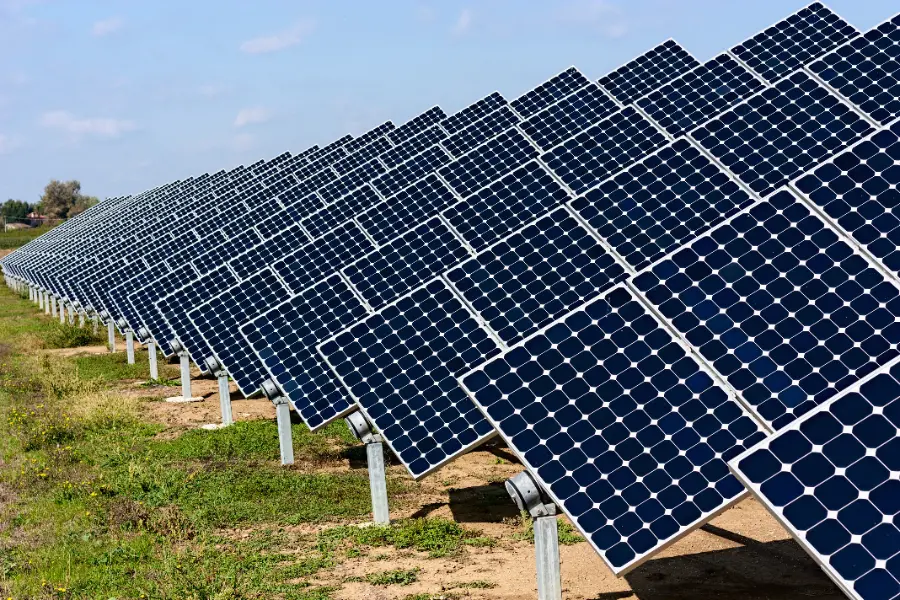
Explore the truth behind the buzzword in our deep dive into the question: ‘Is green technology really green?’ Uncover myths, facts, and the future of green tech.
Ever found yourself pondering, ‘Is green technology really green?’ You’re not alone.
As we navigate our way through the 21st century, this question has become more relevant than ever.
In our quest for a sustainable future, we’ve turned to green technology, but how ‘green’ is it really?
Let’s peel back the layers of this eco-friendly enigma and dive into the heart of the matter.
Is Green Technology Really Green?
Welcome to our exploration of a pressing question: ‘Is green technology really green?’
It’s a topic that’s sparked debates worldwide. In this post, we’ll delve into the world of green technology, from its definition to its history, and from its various types to its adoption.
We’ll also tackle some frequently asked questions and special considerations surrounding this topic.
So, buckle up and join us on this enlightening journey to uncover the true color of green technology!
Definition of Green Technology
Let’s start with the basics. What exactly is green technology?
Well, it’s a broad term that encompasses a variety of techniques, practices, and products, all aimed at protecting our environment and conserving our natural resources.
It’s about harnessing renewable energy sources and materials, reducing carbon emissions and waste, and creating sustainable living environments.
From solar panels on our roofs to electric cars on our roads, green technology is all around us, working to create a more sustainable future.
Brief Overview of the Debate on the Greenness of Green Technology
Now, onto the big question: Is green technology really green?
It’s a debate that’s been heating up in recent years.
On one side, we have advocates who believe that green technology, with its focus on sustainability and conservation, is our best bet against environmental degradation.
They argue that it’s a crucial tool in our fight against climate change and the depletion of our planet’s natural resources.
On the other side, there are skeptics who question just how green this technology really is.
They point out that the production of green tech products often involves the use of non-renewable resources and can lead to significant environmental impact.
They argue that while green technology is a step in the right direction, it’s not a magic bullet that will solve all our environmental problems.
In this post, we’ll delve deeper into these perspectives, exploring the pros and cons of green technology, and trying to get a clearer picture of its true color.
So, stay with us as we navigate this fascinating debate!
Understanding Green Technology
Ready to dive deeper? Let’s move on to understanding green technology.
This section is like a backstage pass, giving you a behind-the-scenes look at what green technology really is.
We’ll explore its concept, its goals, and its place in the supply chain and the marketplace.
We’ll also discuss its role in environmental, sustainability, and governance statements. It’s a fascinating world, full of potential and challenges.
So, let’s get started and unravel the complexities of green technology together!
The Concept and Goals of Green Technology
Let’s start by unpacking the concept of green technology. At its core, green technology is all about innovation.
It’s about finding new and better ways to do things that are kinder to our planet.
The goals of green technology are as diverse as the technology itself.
They include reducing emissions, conserving resources, improving energy efficiency, and promoting sustainable practices.
But it’s not just about the environment. Green technology also aims to create economic opportunities, promote social well-being, and improve our quality of life.
It’s a balancing act, striving to meet our needs today without compromising the ability of future generations to meet theirs.
The Market for Green Technology
Now, let’s talk about the market for green technology.
It’s a booming sector, driven by increasing environmental awareness, government policies, and consumer demand for sustainable products and services.
From renewable clean energy to electric vehicles, from green building materials to sustainable agriculture, the market for green technology is diverse and growing.
But it’s not without its challenges. Issues such as high upfront costs, lack of awareness, and technological barriers can hinder the adoption of green technology.
However, with ongoing research and development, and supportive policies, the future of the green technology market looks promising.
The Role of Green Technology in Environmental, Sustainability, and Governance (ESG) Statements
Finally, let’s touch on the role of green technology in environmental, sustainability, and governance (ESG) statements.
ESG statements are a way for companies to demonstrate their commitment to sustainable and responsible practices.
And green technology plays a crucial role in this. Whether it’s by reducing energy consumption, minimizing waste, or promoting sustainable practices, green technology can help companies meet their ESG goals.
It’s a win-win situation, good for the planet, and good for business. So, it’s no surprise that more and more companies are embracing green technology as part of their ESG strategy.
History of Green Technology
Now, let’s take a step back in time and explore the history of green technology.
It’s a fascinating tale, filled with innovation, determination, and a growing awareness of our impact on the planet.
We’ll look at the early instances of green practices, the rise of the ecological movement, and the establishment of environmental protection bodies.
We’ll also delve into the growth of recycling programs. So, grab your time-travel gear, and let’s embark on this historical journey together!
Early Instances of Green Practices
Let’s start our journey by looking at the early instances of green practices.
Long before the term green technology was coined, people were using sustainable practices in their daily lives.
For instance, traditional farming methods often involved crop rotation and natural pest control, which are both environmentally friendly practices.
Similarly, early civilizations used wind and water power for tasks like grinding grain.
These practices, while not labeled as green technology at the time, laid the groundwork for the sustainable new technologies we use today.
The Ecological Movement and the Establishment of Environmental Protection Bodies
Fast forward to the 20th century, when the ecological movement really took off.
The publication of Rachel Carson’s Silent Spring in 1962 sparked widespread public concern about the impact of human activities on the environment.
This led to the important role and establishment of environmental protection bodies, like the Environmental Protection Agency in the United States, and the adoption of environmental laws and regulations.
These bodies play a crucial role in promoting green environmental technology by setting standards, providing funding, and encouraging research and development.
The Rise of Recycling Programs
Finally, let’s talk about the rise of recycling programs.
In the late 20th century, as the problem of waste disposal became increasingly apparent, recycling programs started popping up around the world.
These programs, which involve collecting, processing, and reusing materials, are a key part of green technology.
They help to reduce waste, conserve resources, and reduce the demand for raw materials.
Today, recycling is a common practice in many parts of the world, and it continues to evolve with advances in technology.
Types of Green Technology
Now, let’s delve into the different types of green technology. This is where the use of green technology gets really exciting!
From alternative green energy to electric vehicles, and from sustainable agriculture to recycling and carbon capture, the world of green technology is diverse and innovative.
Each type of green technology plays a unique role in our quest for a more sustainable future.
So, let’s dive in and explore these different types of green technology together!
Alternative Energy
First up, let’s talk about alternative energy. This is a big one in the world of green technology.
Alternative energy refers to energy sources that are renewable and considered less harmful to the environment than traditional fossil fuels.
This includes solar power, wind energy, hydroelectric power, and geothermal energy.
These technologies harness natural processes to generate power, reducing our reliance on fossil fuels and helping to curb the negative impact of greenhouse gas emissions.
It’s an exciting field that’s constantly evolving, with new innovations and advancements being made all the time.
Electric Vehicles
Next on our list are electric vehicles. These are vehicles that run, at least in part, on electricity.
Unlike conventional vehicles that use a gasoline or diesel-powered engine, electric vehicles use an electric motor powered by electricity from batteries or a fuel cell.
They’re a key part of the green technology landscape because they can help reduce emissions and our dependence on fossil fuels.
Plus, with advancements in technology and infrastructure, they’re becoming an increasingly practical and popular choice for many people.
Sustainable Agriculture
Now, let’s move on to sustainable agriculture.
This type of green technology involves farming methods that are designed to protect the environment, public health, human communities, and animal welfare.
This can include a variety of practices, such as organic farming, permaculture, and agroforestry.
The goal is to create a food system that is sustainable and resilient, providing healthy food to meet current needs while preserving the environment for future generations.
Recycling
Recycling is another important type of green technology.
It involves converting waste materials into new products to prevent waste of potentially useful materials, reduce the consumption of fresh raw materials, and decrease energy usage.
Recycling is a key part of waste reduction and has significant potential for reducing emissions.
Carbon Capture
Last but not least, we have carbon capture.
This technology captures carbon dioxide from the atmosphere, or directly from large-point sources like power plants, and stores it to prevent it from contributing to global warming.
It’s a promising technology that could play a significant role in our efforts to combat climate change and have a positive impact on reducing the carbon footprint.
However, it’s still in the early stages of development and there are many challenges to overcome.
Each of these types of green technology plays a unique role in our quest for a more sustainable future.
They each have their own strengths and challenges, but together, they represent our best hope for reducing our environmental impact and creating a more sustainable world.
Adoption of Green Technology
Now, let’s shift gears and discuss the adoption of green technology. This is where we see the rubber meet the road, so to speak.
We’ll explore the growth of green tech adoption, the challenges faced along the way, and the role of government initiatives and investments in promoting this adoption.
It’s a journey of progress and perseverance, of innovation and initiative.
So, let’s dive in and explore the world of green technology adoption together!
The Growth and Challenges of Green Tech Adoption
Let’s start by looking at the growth of green tech adoption. Over the past few decades, we’ve seen a significant increase in the use of green technologies.
From solar panels on rooftops to electric cars on our roads, green tech is becoming a more common part of our everyday lives.
This growth has been driven by a combination of factors, including increasing awareness of environmental issues, advances in technology, and decreasing costs.
However, the road to green tech adoption hasn’t been without its bumps.
There are several challenges that need to be overcome. For one, there’s the issue of cost.
While the costs of technologies like solar energy and wind power have been falling, they can still be prohibitive, especially in developing countries.
There’s also the challenge of infrastructure. For example, the widespread adoption of electric vehicles requires a network of charging stations, which many areas still lack.
The Role of Government Initiatives and Investments
Now, let’s talk about the role of government initiatives and investments in green tech adoption.
Governments around the world play a crucial role in promoting the use of green technologies.
This can take many forms, from providing subsidies for renewable energy projects to implementing regulations that encourage energy efficiency.
For example, many governments offer tax incentives or grants to homeowners who install solar panels or to companies that invest in green technologies.
Some countries have also implemented policies to phase out the use of fossil fuels and promote the use of renewable energy.
These government initiatives and investments are crucial for driving the adoption of green technologies.
They can help to overcome some of the challenges we mentioned earlier, such as high costs and lack of infrastructure.
They also send a clear signal to businesses and consumers about the importance of moving towards a more sustainable future.
Special Considerations for Green Technology
Now, let’s delve into some special considerations for green technology.
This is where we explore the less-talked-about aspects of green tech – the environmental impact and the need for careful accounting.
These considerations are crucial in understanding the full picture of green technology.
So, let’s dive in and shed some light on these important aspects!
The Environmental Impact of Green Technology
First, let’s discuss the environmental impact of green technology.
While green tech is designed to be more environmentally friendly than traditional technologies, it’s important to remember that it’s not without its own environmental impact.
For instance, the production of solar panels and wind turbines requires raw materials and energy, which can contribute to pollution and habitat destruction.
Electric vehicles, while producing zero emissions during use, still rely on electricity that may come from fossil fuels, and their batteries require rare earth metals whose extraction can be harmful to the environment.
However, it’s important to note that the environmental impact of green technology is often significantly less than that of traditional technologies.
And as green tech continues to evolve, there are ongoing efforts to further reduce this impact, such as developing more efficient manufacturing processes and finding ways to recycle and reuse components.
The Need for Careful Accounting in Green Technology
Next, let’s talk about the need for careful accounting in green technology.
This refers to the importance of considering the full life cycle of green technologies when assessing their environmental impact.
It’s not enough to just look at the emissions produced during use; we also need to consider the energy and resources used in production, as well as the waste and emissions produced at the end of life.
This kind of comprehensive accounting can help us get a more accurate picture of the true greenness of green technology.
It can also help identify areas where improvements can be made, such as developing more sustainable manufacturing processes or better recycling programs.
In conclusion, while green technology offers significant potential for reducing our environmental impact, it’s important to approach it with a critical eye and a comprehensive understanding of its full environmental implications.
Is Green Technology Really Green? FAQs
Still curious? Now, let’s tackle some frequently asked questions about green technology.
From the greenness of renewable energy technologies to the effectiveness of green technology, we’ll answer some of the most common queries.
This is your chance to get those burning questions answered, so let’s dive right into the FAQs!
Q: Are renewable energy technologies really green?
A: Yes, renewable energy technologies are considered green because they harness natural processes to generate power, reducing our reliance on fossil fuels and helping to curb greenhouse gas emissions.
However, it’s important to note that while they are greener than traditional energy sources, they do have an environmental impact, particularly in the production and end-of-life stages.
Q: Can we choose green technology over the existing technology?
A: Absolutely! Choosing green technology over existing traditional technology is a great way to reduce your environmental impact.
However, it’s important to consider the full life cycle of the technology, from production to disposal, to ensure you’re making the greenest choice possible.
Q: What are some examples of green technology?
A: There are many examples of green technology, including solar panels, wind turbines, electric vehicles, energy-efficient appliances, and recycling systems.
These technologies all aim to reduce environmental impact and promote sustainability.
Q: How effective is green technology?
A: The effectiveness of green technology can vary depending on the specific technology and how it’s used.
However, in general, green technologies can be very effective in reducing emissions, conserving resources, and promoting sustainability.
They’re an essential tool in our fight against climate change.
Q: What is considered green technology?
A: Green technology refers to techniques, practices, and products that are designed to protect the environment and conserve natural resources.
This can include everything from renewable energy technologies to products made from recycled materials.
The key is that they’re designed to be more sustainable and less harmful to the environment than traditional alternatives.
Is Green Technology Really Green? Conclusion
Now, it’s time to wrap things up. In our conclusion, we’ll recap the main points and share some final thoughts on the ‘greenness’ of green technology.
It’s been quite a journey, hasn’t it? So, let’s take a moment to reflect on what we’ve learned and consider the future of green technology.
Recap of the Main Points
Let’s take a moment to revisit the key points we’ve covered. We started by defining green technology and discussing the ongoing debate about its greenness.
We then delved into the history of green practices and the rise of the ecological movement.
We explored the various types of green technology, from alternative energy to carbon capture, and discussed the growth and challenges of green tech adoption.
We also touched on the environmental impact of green technology and the importance of careful accounting.
And finally, we answered some frequently asked questions about green technology.
Final Thoughts on the Greenness of Green Technology
So, is green technology really green? Well, as we’ve seen, the answer is complex.
Yes, green technology is designed to be more environmentally friendly than traditional technologies, and it plays a crucial role in our efforts to combat climate change and protect our planet.
However, it’s not without its own environmental impact, and it’s important to consider the full life cycle of these technologies.
In the end, while green technology may not be perfectly green, it’s a significant step in the right direction.
It represents our best hope for creating a more sustainable future, and with ongoing research and development, its greenness can only improve.
So, let’s continue to support and invest in green technology, while also striving to make it even greener.
After all, our planet’s future depends on it.
No agency regulates which products can claim to be green, and there are no official guidelines out there to define what green means. Read more

